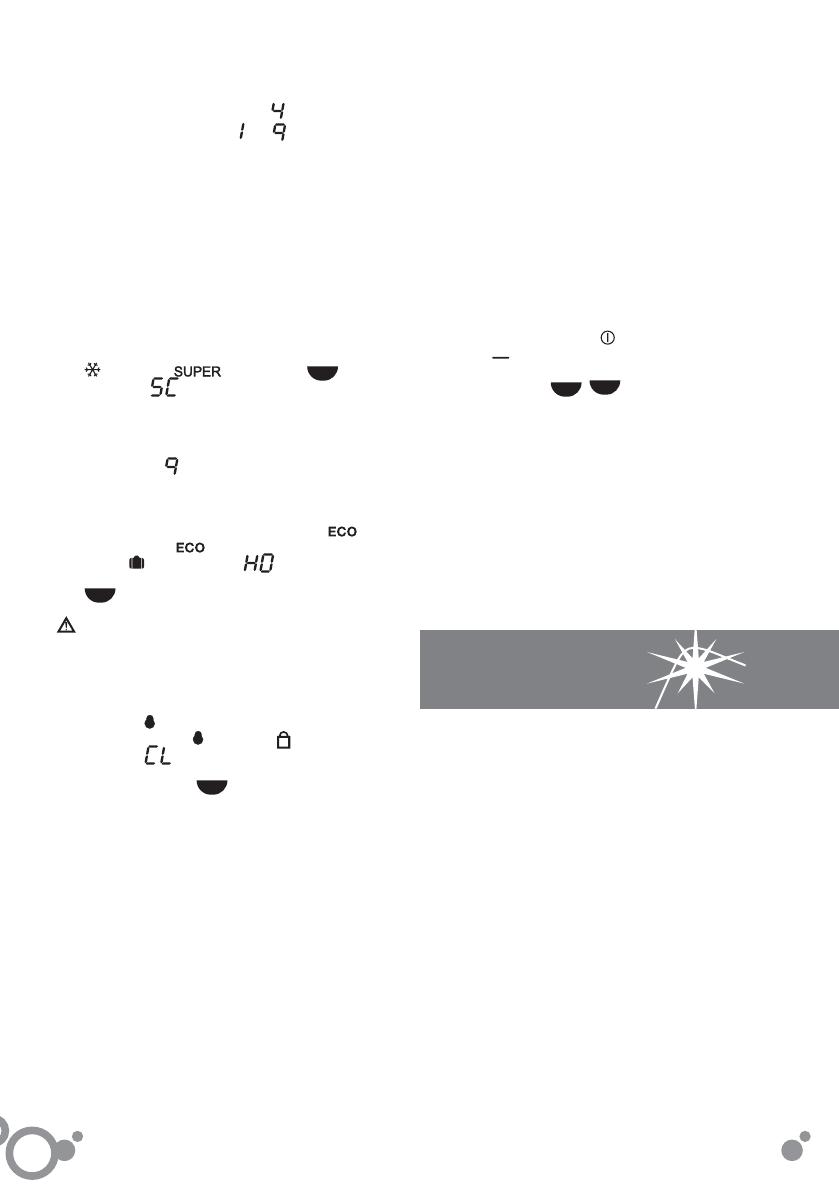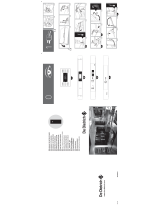
3
Mantentzea eta
garbitzea
3.1 Barrua garbitzea. Bikarbonatoa botatako
uretan busti trapu edo belaki bat, barruan
usain txarrik egon ez dadin.
Inoiz ez erabili lurrunaren bidez garbitzen
duen tresnarik, disolbagarririk edo detergente
urragarririk hozkailua garbitzeko.
3.2 Kanpoa garbitzea. Pantailak garbitzeko,
ez erabili lurrunaren bidez garbitzen duen
tresnarik.
Gomendagarria da urtean behin
xurgagailuarekin atzeko saretxoa garbitzea.
3.3 Osagarriak garbitzea. Ezin dira ontzi-
garbigailuan sartu. Eskuz garbitu behar dira
belaki edo trapu batekin.
3.4 Argia aldatzea. Barruko argia errez gero:
deskonektatu hozkailua. Kendu gaineko
estalkia erlaitzetik tiratuta (3.4.1) eta atera
erretako argia (3.4.2). Berdin lotzen den bat
euskara
58
Gomendioa: Zure hozkailurako
gomendatzen den tenperatua
da.
Gomendagarria da beti
eta
gradu
artean mantentzea.
Gogoan izan barruko tenperatura giroko
tenperaturaren, kokapenaren eta atea
zabaltzen den aldi kopuruaren mende
dagoela.
2.3 Hozkailuaren funtzioak.
Azkar hozteko funtzioa: Funtzio honek
tenperaturarik hotzenean aktibatzen du
hozkailua 6 orduz. Hozkailuan elikagai ugari
sartutakoan funtzio hau aktibatzea komeni
da. Aktibatzeko eta desaktibatzeko: Sakatu
(2.3.1) edo (2.3.2, 2.3.3)
b
modeloan
agertuko da pantailan,
funtzioa aktibo dagoen bitartean.
Oporretako funtzioa: Denbora luzez
etxetik kanpo egon behar denerako egokia.
Hozkailua
graduan egongo da,
ondorioz, ez da usain txarrik egingo eta oso
gutxi kontsumituko du.
Aktibatzeko eta desaktibatzeko: sakatu
tekla pantailan agertu arte (2.3.4) edo
sakatu
tekla, pantailan agertuko da
funtzioa aktibo dagoen bitartean (2.3.5).
c
modeloak ez du funtzio hau.
Oharra: Oporretako funtzioa ongi ibiltzeko,
hozkailuko atea itxita egon behar da.
Blokeoa: Tresnaren erregulazioan nahi
gabeko aldaketarik egon ez dadin edo
haurrek ezer alda ez dezaten egokia.
Pantailan
agertuko da blokeatuta dagoen
bitartean. Sakatu
(2.3.6) edo (2.3.7).
Pantailan
agertuko da betiko pantaila
arruntarekin txandaka, funtzioa aktibo
dagoen bitartean.
c
modeloak ez du
funtzio hau.
2.4 Elikagaiak nola banatu. Hozkailuaren
barruko tenperatura ez da uniformea. Eremu
batzuk besteak baino hotzagoak dira.
Elikagaiak dagokion tokian jarri behar dira,
ongi mantenduko direla ziurtatzeko (2.4,1):
1. Gurina.
2. Zizka-mizkak, gaztak, jogurtak, esnegaina,
saltsak, arrautzak.
3. Botilak, esnea.
4. Haragia, hegaztiak, ehiza eta arrain
gordinak, hestekiak.
5. Lekaleak eta barazkiak.
6. Vacuum box (osagarria)
7. Ice maker (osagarria)
2.5 ICE MAKER. Zure hozkailuaren osagarri bat
da eta honen bidez izotzezko 20 puska egin
daitezke. Ice maker baldin baduzu, atera
hozkailuko ontzitik, (2.5.1), atera barruko 5
ontzitxoetako bakoitza (2.5.2) eta bete urez
(2.5.3). Sartu berriro ere ontzitxoak urik isuri
gabe (2.5.4). Kontu handiz, sartu zure Ice
maker hozkailuko ontzian (2.5.5). 24 orduren
buruan, izotz-puskak erabiltzeko moduan
izango zara.
2.6 Hozkailua itzali. Sakatu
segundoz edo
sakatu
pantailan tenperaturarik agertzen
ez den arte (2.6.1, 2.6.2). Edo biratu agintea
off tokira (2.6.3).
b
,
c
modeloetan
“on” led-a itzali egingo da.
2.7 Erabiltzeko gomendioak.
• Haizagailua deskonektatuta eduki energia
gehiago aurrezteko (2.7.1).
• Atea ez eduki irekita behar baino denbora
gehiagoz. Horrela, zure hozkailua modu
eraginkorragoan erabiliko duzu eta ez
duzu energia gehiago kontsumituko.
• Elikagaiak ontzi hermetikoetan sartu,
lehortu ez daitezen.


















